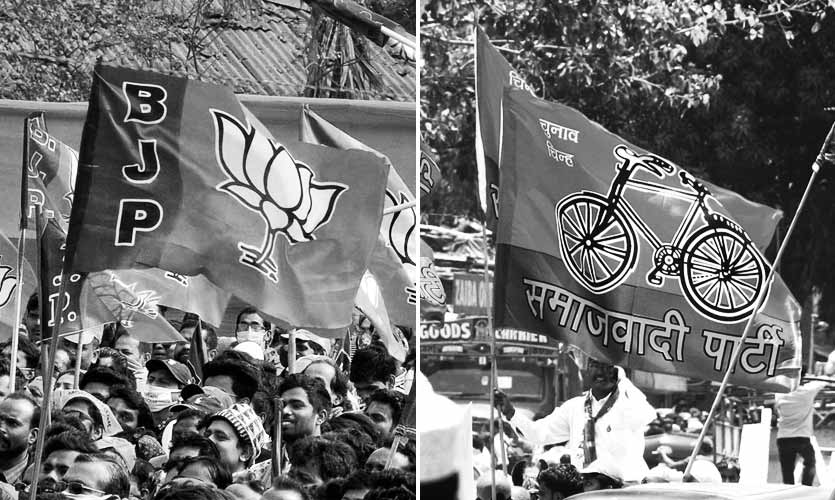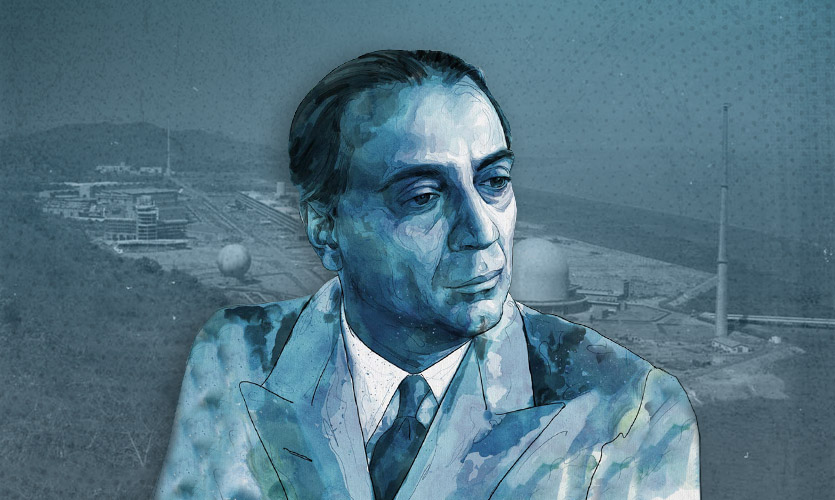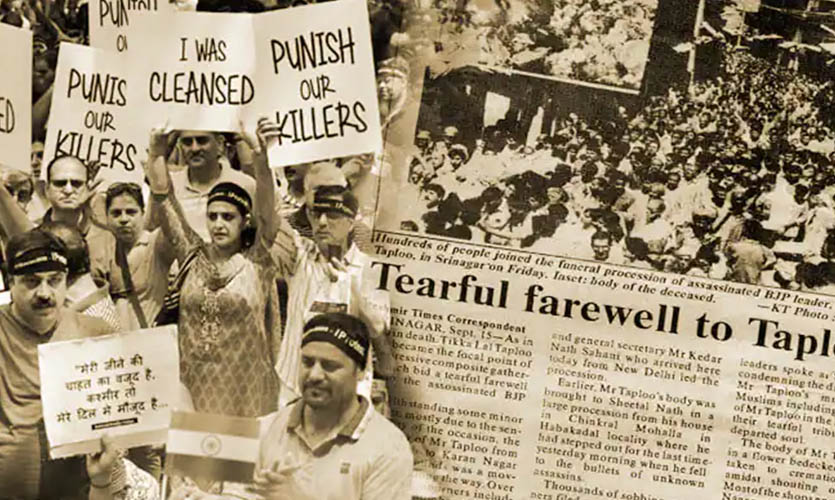All recent opinion polls and surveys have predicted a win for the Bharatiya Janata Party in the 2022 legislative assembly election in Uttar Pradesh. While the Samajwadi Party appears to be a distant runner-up in the state so far, is it a margin comfortable enough for the BJP to survive an extensive migration of leaders?
The OBC Exodus
OBC leader and Labour Minister Swami Prasad Maurya quit the BJP on January 11, along with three other MLAs. On January 12, another OBC leader, Dara Singh followed suit. Shikohabad BJP MLA Mukesh Verma became the latest in the list after resigning on Thursday morning. While they have not specified if they will join the SP, party supremo Akhilesh Yadav has been less coy with his tweets that include pictures with the same leaders. “Swami Prasad Maurya is our leader. We will support whatever decision he takes. Many other leaders will join us in the coming days,” said Verma.
“The BJP government in the past five years did not pay any attention to Dalits, backward castes and minorities and disrespected people’s representatives,” claimed Verma. Maurya, the former cabinet minister believed to have initiated this exodus, tweeted after his resignation, “Due to the attitude of gross neglect towards Dalits, backwards, farmers, unemployed youth and small and medium-sized traders, I am resigning from the Yogi ministry of Uttar Pradesh.” He will supposedly reveal his future steps on Friday, January 14.
Interestingly, a local court has issued an arrest warrant against Maurya after he failed to appear for a hearing in a 2014 case on Wednesday. The case was lodged against him for allegedly making objectionable comments about Hindu gods. Advocate Anil Tiwari told PTI that Maurya had been directed to appear before the court on January 12 but failed to do so. The next hearing has been set for January 24.
Maurya and deputy CM Keshav Prasad Maurya together hold a substantial clout over the non-Yadav OBC section, also called ‘NYOBC’, in Uttar Pradesh. The BJP had deployed the deputy CM to negotiate with Maurya after he announced his resignation as cabinet minister. “I do not know why Swami Prasad Maurya ji has resigned but I appeal to him to sit and talk, hasty decisions often prove to be wrong,” said Keshav Prasad Maurya. Swami Prasad Maurya reacted to his request and said, “Keshav Maurya is my brother. But for the past five years he has also been helpless… I have rejected the BJP… there is no question of going back.”
The migration of BJP members comes at a time when the party is busy sifting through its candidate list and deciding which leaders to project from each seat. Historically, the BJP has a practice of ruthlessly changing MLAs for most seats to negate anti-incumbency. Noteworthy, no party or alliance has managed to retain power for a consecutive term in UP since 1985. In removing dead-weight, however, has the BJP handed its chance at office to the SP on a silver platter?
Reflection In Polls
“Turncoats are always expected to go,” says political strategist and commentator Amitabh Tiwari while speaking to The Sparrow. Swami Prasad Maurya was a Bahujan Samaj Party leader before he joined the BJP in 2017 (right before the assembly election that year). “BJP ministers and MLAs with an RSS background usually don’t complain when they don’t make the candidate list again. This is not the case for turncoats, and 20 percent of the UP ministry comprises such leaders,” say Tiwari.
He continues, “The leaders will have evaluated their own prospects as part of the party and the party’s prospects in the upcoming election. It is possible they had a hint that the party will not give them a ticket due to either the respective leader’s unpopularity or anti-incumbency – it’s difficult to pinpoint that. But if the leader is unpopular, it won’t hurt the BJP even if they manage to secure a SP ticket.” Swami Prasad Maurya, however, has been a five-time MLA and is a popular NYOBC leader with a substantial following. Tiwari explains, “The BJP benefitted immensely with the non-Yadav OBC vote bank that united against the SP in 2017. The sentiment that Yadavs were the sole group benefitting with the Akhilesh Yadav-led SP in power, worked for the BJP. However, the NYOBC section consists of over 70 sub-castes, and therefore, it is difficult to maintain this vote bank.”
The political strategist also points out the BJP’s dependency on allies such as Apna Dal and Suheldev Bharatiya Samaj Party (SBSP), especially in western UP, to win the NYOBC vote bank. A little resentment has also been noted among the Nishads over not being included in the SC section, as promised in 2017. However, sources have confirmed this afternoon that the BJP, Anupriya Patel led–Apna Dal, and Sanjay Nishad’s Nishad Party have agreed on a seat sharing formula in UP.
Talking about the recent opinion polls, Tiwari says, “The SP has capped. The only way it can bridge the gap is with individual or targeted following, which is where leaders like Maurya can help. It is also giving lesser tickets to Muslim candidates this time to drive any Hindu vote it can, since most Muslims will vote for the party in any case.” As per the findings of the recently conducted Times Now-Veto opinion poll (before Maurya decided to resign), 48.1 percent Muslims are in favour of voting for the SP. The survey awards a comfortable win to the BJP with 227-254 seats in the assembly, as compared to the 136-151 predicted for SP. However, in comparison to the 2017 election, this is a substantial drop from 312 seats for the BJP and significant increase from 47 seats for the SP. While the BJP alliance continues to be ahead in most regions, it has registered only a 37.61 percent vote share in western UP. The SP seems to be leading in the region with a 38.14 percent vote share.
“Going by the undercurrents, the BJP is bound to face optical damage, but it is difficult to determine the extent of this damage,” says Tiwari. He adds, “Yogi is a ‘mini-Modi’; however, Modi’s acceptability is higher since he does not project himself as a hardcore Hindutva leader.” CM Yogi Adityanath’s recent “80-20” comment has also drawn flak and allegations of promoting communalism from various sections, especially the Opposition. During a conclave hosted by Doordarshan, he had said, “It will be an 80 percent versus 20 percent in UP polls and the BJP will retain power… 80 per cent will move forward with positive energy whereas 20 per cent have always opposed and will oppose further.” This was viewed as an attack on the Muslim community that forms about 20 percent of the state’s population. Tiwari explains, “He is clearly talking about how the BJP stands to gain from the Hindu majority. Nevertheless, it is a correct assumption because even if 50 percent of the 80 percent majority votes for the party, that is still 40 percent of the vote. The BJP will still be able to form a government as the other half will be divided among various parties.”
Law And Order
According to the Times Now-Veto survey, law and order has emerged as one of the top election issues in UP this time, second only to employment. According to the poll, 34.4 percent people said that employment is the most crucial issue, 28.2 percent said that it is law and order, 19.6 percent said it is development, and 17.9 percent said it is caste and religion. The Yogi government has been lauded for getting “gunda-raaj” in UP under control. Action against noted criminals such as Mukhtar Ansari, Atiq Ahmed, and the 2020 encounter of gangster Vikas Dubey have made for some of this administration’s ground-breaking moments. “The policy of ‘thok do’ (finish off) as an open call to deal with criminals followed by Operation Langda has rubbed a section of people the wrong way,” says Tiwari in his article dated January 4. As per the statistics of Operation Langda, between March 18, 2017 and August 13, 2021, the UP Police have shot at and injured at least 3,302 alleged criminals in 8,472 encounters. The death toll from these encounters during the same period is 146.
In his piece, Tiwari has highlighted that crime against SC/ST has seen an approximate 142 percent increase as compared to 2016, a statistic which could hurt the BJP. However, Advocate Krishnanand Mishra presents a contrasting point of view. He says, “What this administration has done, it has done so across caste lines, without bias. Noted criminals belonging to SC/ST as well as the Brahmin community have been tracked and their actions have been reprimanded, regardless of religion and caste.” The lawyer explains that a significant section of the BJP’s dependable Brahmin vote bank is just as dismayed since perpetrators within their community have also been targeted. Although Tiwari rationalises that the winds may continue to remain largely in the BJP’s favour. He says, “One thing that the BJP has managed to get across to the people is that the majority cannot live like minority in this country. No matter how liberal you are, if you belong to the majority community, chances are you would want to stay that way. The sentiment has the potential to resonate with enough people and earn the BJP a comfortable second term.”
The Horus Eye is a weekly column written by Divya Bhan analysing current affairs and policies. This column does not intend or aim to promote any ideology and does not reflect the official position of The Sparrow.
Also read: Punjab & UP: The 2022 Elections And Appeasement
Also read: Does The BJP Stand To Gain From Building Temples In The 2022 UP Election?










